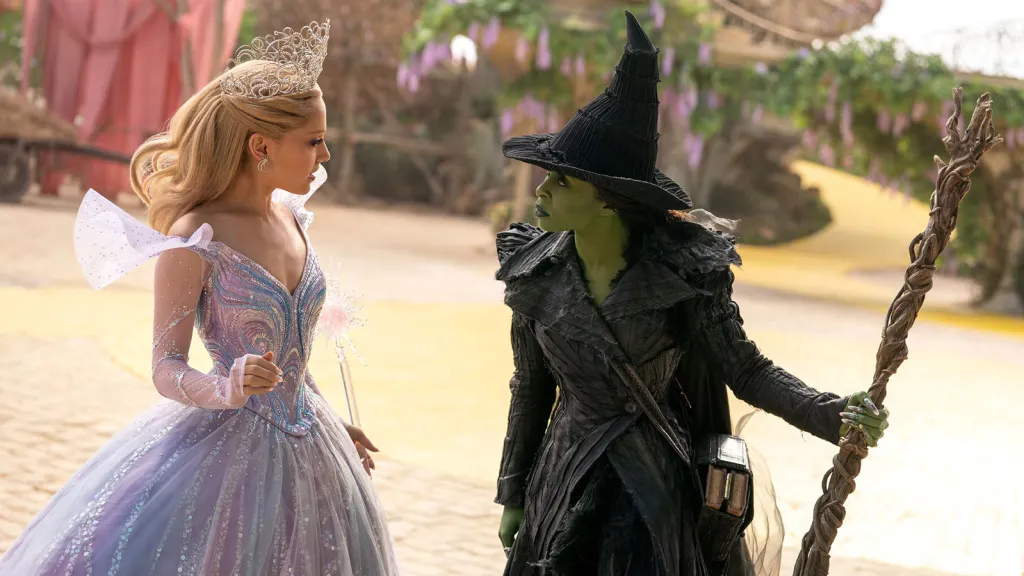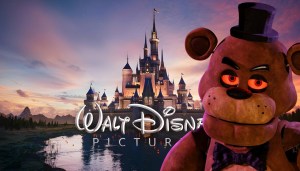When Universal Pictures first announced that the highly anticipated film adaptation of the Broadway hit musical, Wicked, would be split into two parts, the decision wasn’t met with full support from the fandom. In fact, there was a flurry of debate across the internet asking if it was really necessary to split the film or if it was just an easy way for the studio to make more money. Director Jon M. Chu’s decision to follow the Broadway stage structure, with Act 1 ending just after the iconic “Defying Gravity” number, was interpreted by many as a cynical commercial ploy. Why cut the magic short and take the viewer out of the perfect dramatic arc at its climax?
Videos by ComicBook.com
However, as the hype for the release of Wicked: For Good reaches a fever pitch, the wisdom of Chu’s strategy is clear as day. The year-long intermission is not a break in the story; it is an intentional dramatic pause that allows the audience to fully process and understand the consequences of Elphaba’s choices and, more importantly, gives the audience time away from the characters during their years-long journeys apart. Splitting the movie is less a controversial choice to stray from the source material and more a framing to embrace the emotional and political drama about to unfold in Oz.
The Year-Long Gap Between Films Serves as a Chance to Process the Changes to Come

Wicked hinges on a perfect portrayal of a giddy, hopeful beginning to the tragic, world-weary end, which is the moment Elphaba chooses to abandon her life at Shiz University, reject the Wizard’s lies and manipulation, and embrace the mantle of “Wicked Witch of the West.” This isn’t just a big song to end Act I; it is a life-altering, world-shattering decision for Elphaba that redefines her identity and her relationship with everyone she loves, especially Glinda. On stage, the moment “Defying Gravity” ends, the audience only has 20 or so minutes to catch its breath before Act II begins, and suddenly a year has passed. Elphaba is now a hunted revolutionary, Glinda is engaged to Fiyero and the Wizard’s press secretary, and their friendship is a memory tainted by politics. The sheer speed of this huge change in the theater relies upon the audience catching up through expositional lyrics in numbers like “A Sentimental Man” and “I’m Not That Girl (Reprise)” to bridge the gap.
The stage version’s momentum works beautifully within the confines of live theater, but a direct, two-hour cinematic translation would risk cheapening the weight of the in-universe time that has passed. Film, as opposed to live theater, requires a more deliberate sense of pacing to make a shift this dramatic believable. By giving the audience a full calendar year—an entire real-world season cycle, if the film follows the Broadway timeline—to sit with the last image of Elphaba’s power draining the lights in the Emerald City before she rushes off on her broom, the act of waiting for the second film becomes an essential part of the cinematic experience. We, the audience, are forced to consider what it truly means for Glinda and Elphaba to spend a year separated: one painted as a villain and the other shackled by celebrity.
When Wicked: For Good debuts in theaters on November 21, 2025, the emotional impact of seeing the hardened versions of these characters will be much more touching because the audience will have unconsciously felt the passage of time alongside them. The reunion between Elphaba and Glinda will feel like a true reconciliation after a long, painful absence, not a quick change of costume and scenery.
Practically speaking, if everything were condensed into one film, it would take at least 4 hours to tell the story. While some fans may not mind such a commitment, the vast majority of moviegoers, no matter how devoted to the source material, do not want to sit through a work that is that long and dense.
The Two-Part Structure Allows for Necessary World-Building and Character Depth

An equally important logistical reason for the split is the freedom to fully explore the dense political and ethical themes woven into the source material. Wicked is not just a story about a friendship; it’s a commentary on propaganda, scapegoating, the rise of fascism, and the danger of letting history be written by the powerful. On stage, many of the smaller, but critical, world-building moments—like the increasing persecution of the Animals or the true nature of the Wizard’s power—are either quickly glossed over or delivered through rapid-fire lyrics and dialogue that can be easy to miss.
Moreover, the added runtime that comes with a second film can be dedicated to further exploring the friendship between Elphaba and Glinda, particularly in their often-overlooked moment in the song “For Good.” In the stage show, this song is the final, tearful farewell. In the film, the time freed up by moving the second act’s complex plotting can be used earlier to truly invest in why Glinda’s betrayal, however well-intentioned, is so devastating, and why Elphaba’s choice is so painful for them both.
The two-part structure isn’t just about giving the story breathing room; it’s about properly preparing the audience to fully invest in the dramatically higher stakes of For Good, ensuring that when the tragedy established in The Wizard of Oz arrives, it lands with the full, gut-wrenching force the source material deserves.
What do you think? Leave a comment below and join the conversation now in the ComicBook Forum!









